
Bernhard Petruschke – the MZ conqueror of the first hours of the GDR
Bernhard Petruschke, later given the nickname “Petrus”, saw the light of day on April 6, 1910, in Grünberg in Silesia (today Zielona Góra in Poland). As the son of a gardener, he trained as a carpenter after school. He is said to have made his first attempts riding on a motorized two-wheeler at the age of 17 and Bernhard drove his first races from 1931. At first, he was riding on Arial and Rudge, two English manufacturers. Meanwhile, he lived in Berlin and competed in numerous races. In the first year as an “ID driver” and from the 2nd season 1932 as a “licensed driver”. One of the most important successes in his early days was a 2nd place in 1934 in the 350cc class and victory up to 500cc in the Feldberg race in the Taunus.



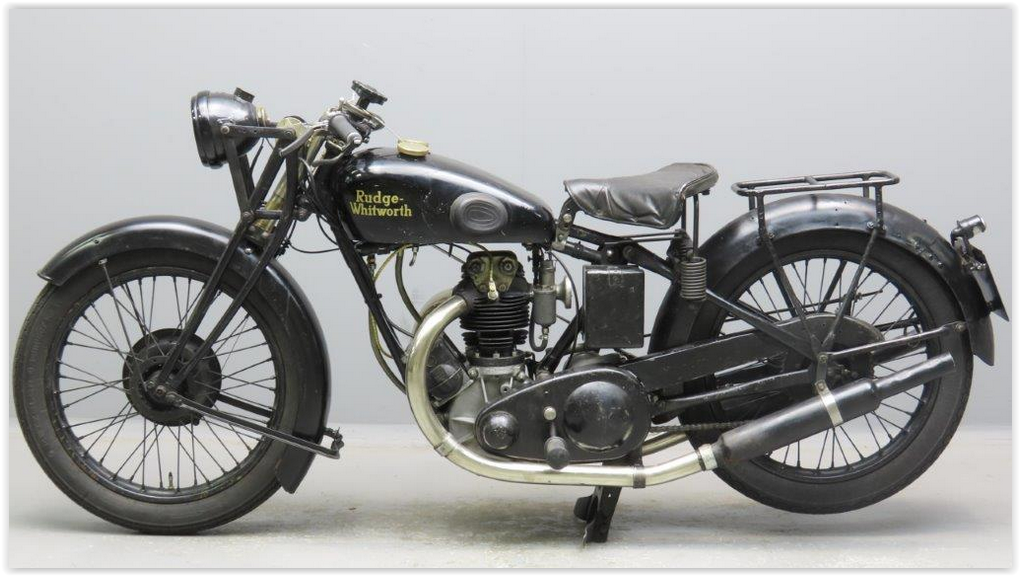


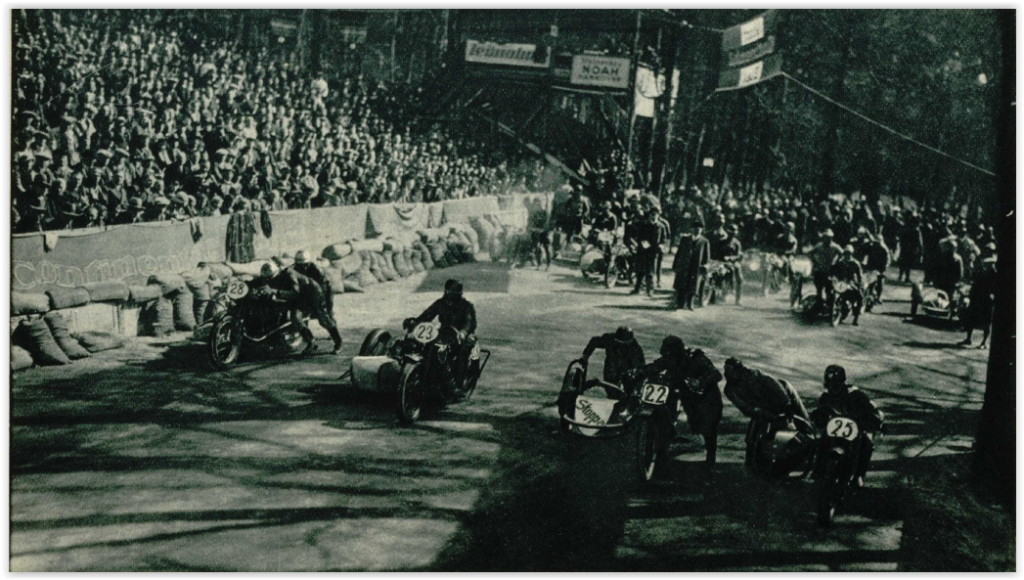
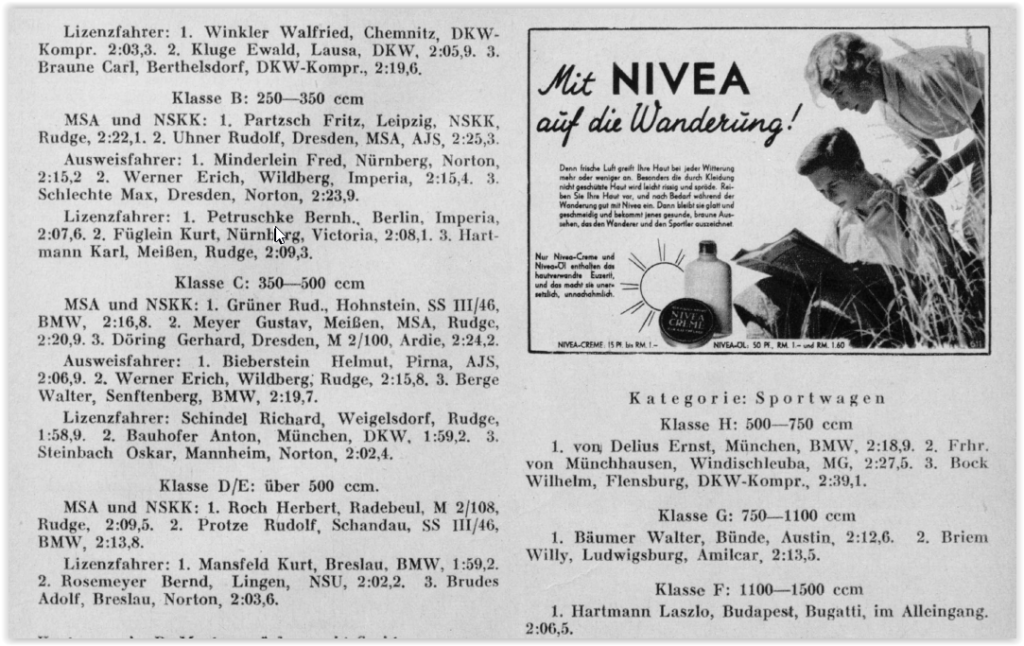

In 1934 at the Schleizer Dreieck
Petruschke can also be found in the statistics on the Schleizer Dreieck as early as 1934. He got his first countable result in mid-September on his Rudge in the 500 cm³ class with 5th place. The winner in this race was Bernd Rosemeyer ahead of Otto Ley (both DKW). The former was one of Germany’s great motorsport idols who became European racing car champion in 1936 with Auto Union. In January 1958 he had a fatal accident while attempting to record on the Reichsautobahn Frankfurt-Damstadt. His funeral became a true state act after Nazi leaders adorned themselves with his successes. In early photos from 1933 Rosemeyer had already started wearing the swastika armband, which is why the NSDAP gave him an honorary grave. As was common in many cases at the time, his death was staged in a very heroic manner.


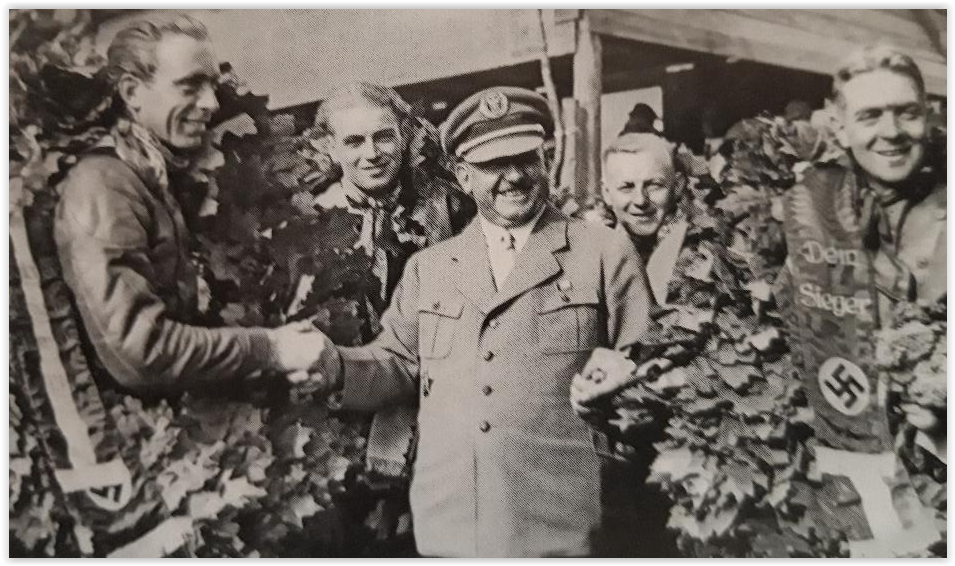
Numerous successes up to the war
“Petrus” finished the 1934 season as German runner-up in the 350cc class together with Werner Mellmann (NSU) behind Oskar Steinbach (NSU). The Schleizer triangle brought Bernhard less luck in the years that followed. In the 1936 race he was on his way to a top position. But while in the lead, he overdid it and fell, injuring his hand and getting some bruises. Numerous top placings followed before World War II broke out, including victory at the Belgian GP in 1937 in the 175cc class on a DKW as a works driver. In the following year there was also success in the 250s on DKW at the last prewar event of the Kurpfalz race at the Hockenheimer Dreieck. The claim for a 175cc victory on the Sachsenring in 1938 (as can be found in some sources) is not proven. According to our records, this category was not held at all at the time. But after the war, Petruschke should still find enough reason to celebrate in Hohenstein-Ernstthal.

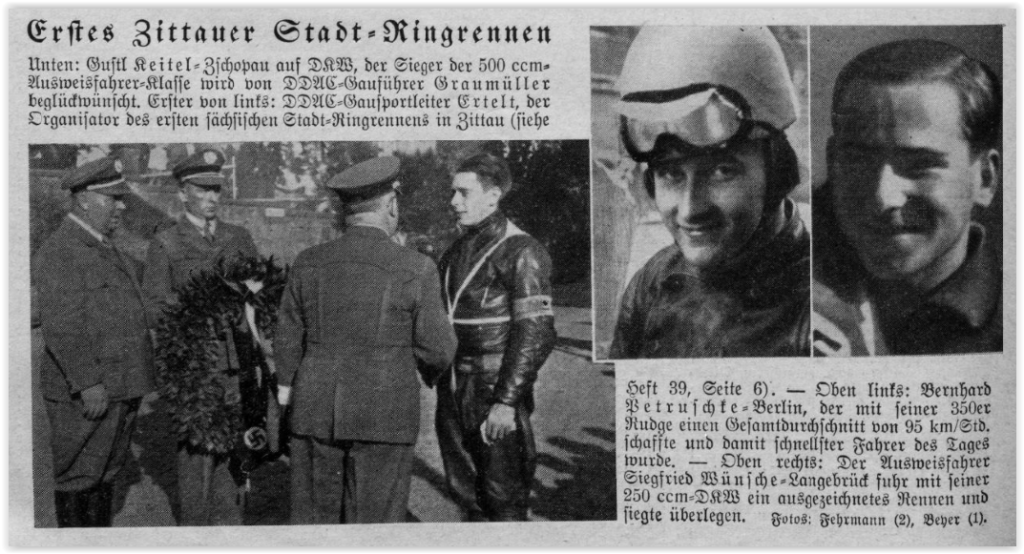
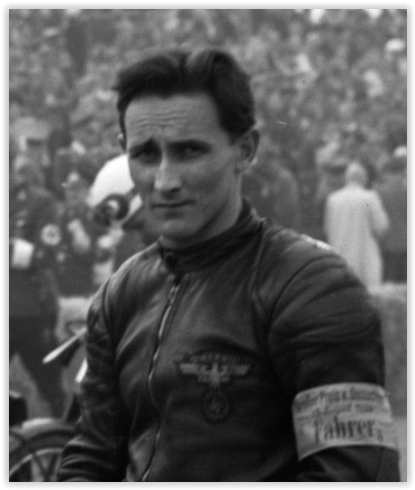





The first years after World War II
Before the outbreak of war, Petruschke’s greatest successes were the vice European championship in the 250cc class for DKW as a works pilot. Apparently he was much more lucky after the war than, for example, his later comrade Heinz Fügner, who had spent the first 3 years in captivity from 1945 (see the 7-part story in our history). Initially, Bernhard competed in the all-German championship with a DKW. As before the war, he made it to the runner-up championship with the 350cc DKW in 1948.

Petruschkes new home after World War II
Kleinmachnow, 15 km east of Potsdam, had now become his residence in the GDR. Participation in the motorcycle world championship held from 1949 was not an issue for Petruschke. The World Cup, which was only held in Europe, could in principle be described as an absolute farce for the first 3 years of its existence. Only from 1952 were drivers from Germany allowed again. Before that, as an aftermath of the Nazi era, they weren’t even eligible to start. A blanket ban to punish the German sports world for Nazi atrocities, what nonsense! Motorsport, of all things, would have been a good means of getting back to normal immediately. Similar outrages were repeated after the Berlin Wall was built in 1961, after which GDR racing drivers were not given visas for NATO countries for years. So they had absolutely no chance in the World Cup, as most of the races took place in member countries.
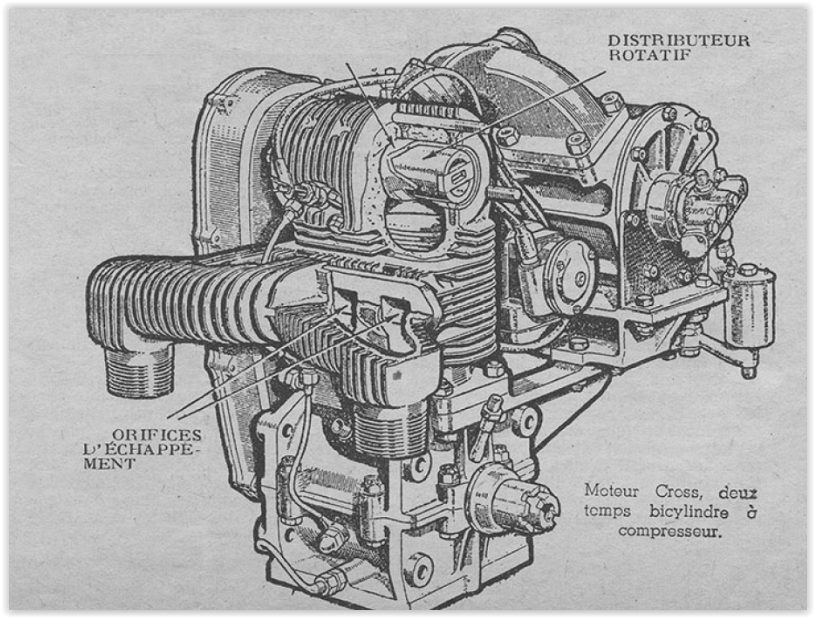
Consequences of the compressor ban & difficult new beginning in the GDR
Together with his friend Daniel Zimmermann, “Petrus” undertook what was to be the only problem solution in the GDR for decades. They improvised as much as they could and, under the guidance of the talented technician, built their own construction based on the DKW RT 125, the “ZPH”. This stood for the first letters of the designer, driver and mechanic Henkel. The centerpiece of this development was the rotary plate valve attached to the side of the crankcase, via which the mixture feed from the carburetor was controlled directly into the crankcase. This technology was later to be adopted by MZ as well, which made the incredible successes possible in the first place despite the simplest means in the workers ‘and farmers’ state. Even later the secrets of this technology made it to Japan in a wonderful way, see the story about Ernst Degner in our History.
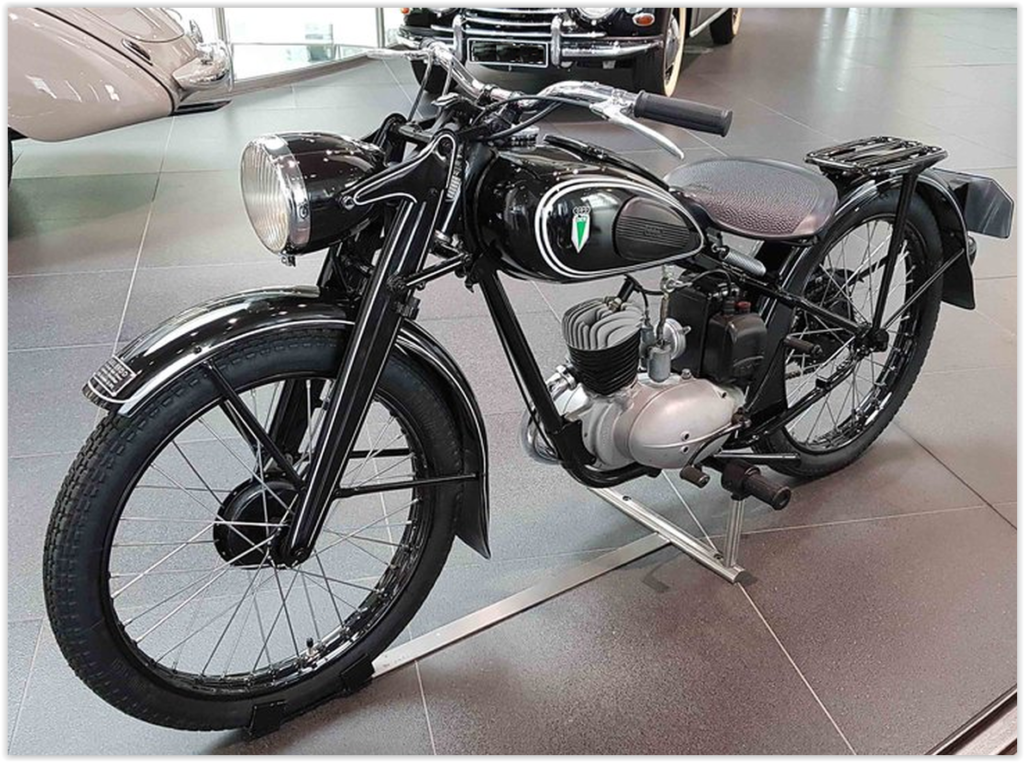
1950 – the first year with the ZPH 125
It turned out early on that the ZPH was faster than the IFA 125. The abbreviation IFA stood for “Association of People’s Own Vehicle Works” and was located at the former DKW production facility in Zschopau. From 1956 it should first become IFA-MZ, then only MZ as an abbreviation for Motorradwerke Zschopau. The first 125 cm³ title of the GDR master of the post-war period went to Erhart Krumpholz at the IFA-DKW, but more because of the greater consistency. The self-construction under the direction of designer Daniel Zimmermann had the best speed at the beginning, but initially suffered from minor teething problems.
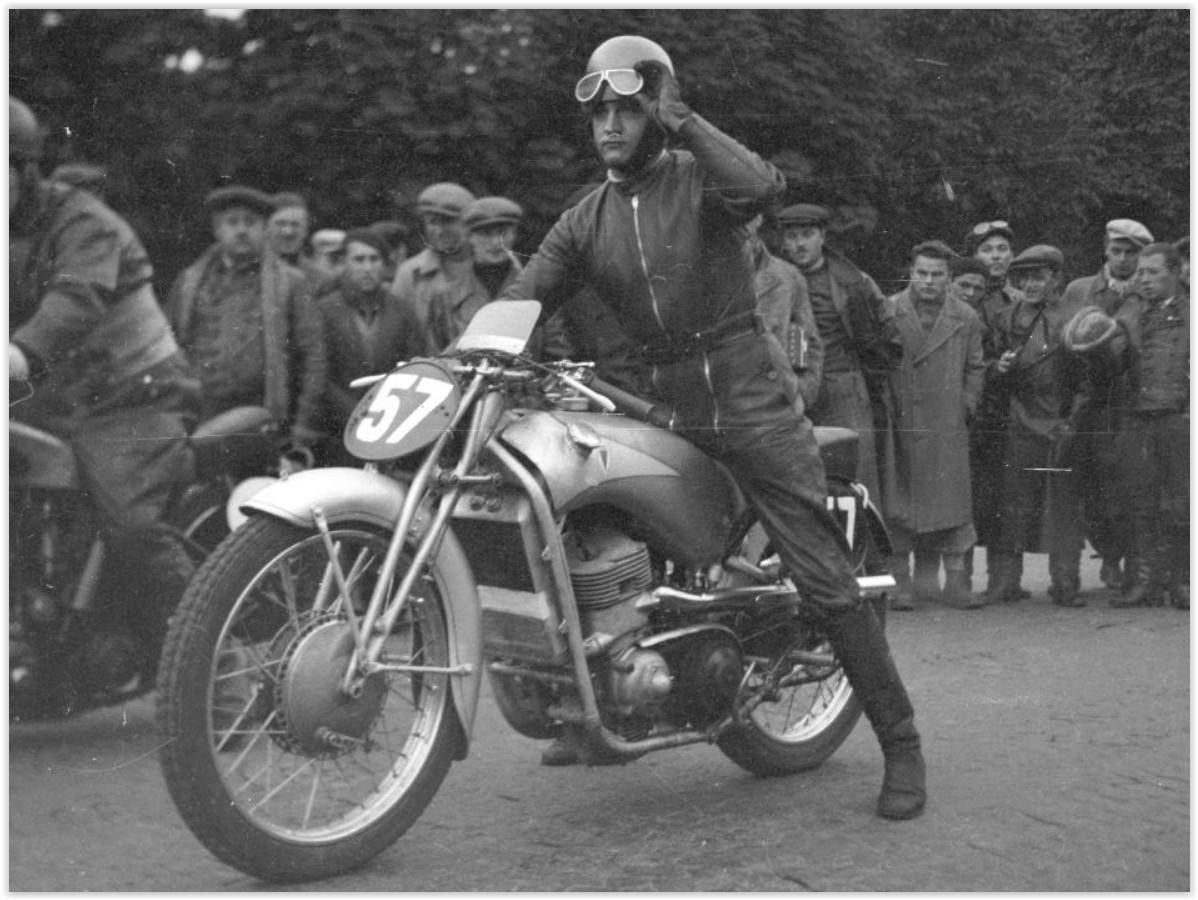
Respectable success with the self-made machine on a traditional racecourse
Nevertheless, Petruschke managed a good 4th place on the Schleizer Dreieck behind H. P. Müller and two other “Wessies” (Ewald Kluge and Heiner Dietrich) from the Federal Republic of Germany. At the 1st “swimming pool race” (Bäderrennen) in Stralsund, Bernhard achieved what was probably the greatest success of the season. On the occasion of the race on the Baltic Sea, he also proved his ability as a racing driver. Despite a fall during training, “Petrus” started the race on Sunday with a bandaged knee. And promptly he won the 125cc victory to frenetic applause from the audience. It was worth it for him to have bitten his teeth.
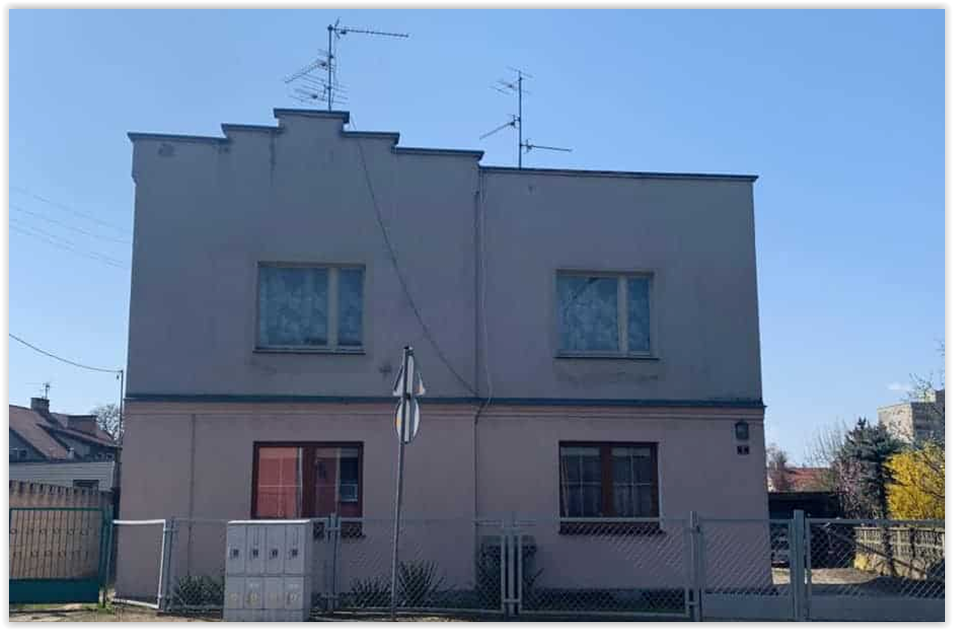
More see part 2 of the story about Bernhard Petruschke, coming soon..
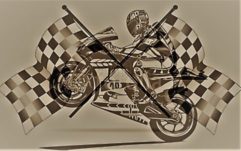
Hallo,
Bild 1 wurde beim Wiener-Höhen-Straßen-Rennen aufgenommen.
Das ist nicht Hitler auf dem Bild, sondern der Typ ein paar Bilder weiter unten.
Beste Grüße
HansPaul
Hallo,
danke das erste ist laut unseren Quellen korrekt, bei Bild 1 im englischen Teil.
Beim anderen Bild, auf welchem darunter etwas von Hitler steht, sind wir uns absolut sicher: Er ist es.
Dies auch, weil es bei unserer Quelle von damals im Kommentar dazu vermerkt war.
Der Mann zwei Bilder unten kann rein von der Postur her schon nicht der Mann aus Braunau a.Inn sein.
Auch das Lachen und das (zu) breite Gesicht passen überhaupt nicht zum ehemaligen Gefreiten.
Viele Grüße und danke für die Aufmerksamkeit
die MotoRacers